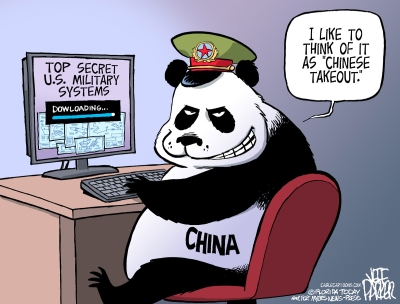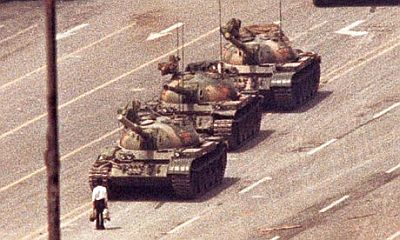 Harry J. Kazianis – The escalation in the U.S.-China trade war Friday – with each country slapping new tariffs on the other – is part of a larger fight that will decide which nation will shape the economic and geopolitical future of the 21st century. President Trump is right to refuse to raise the white flag of surrender.
Harry J. Kazianis – The escalation in the U.S.-China trade war Friday – with each country slapping new tariffs on the other – is part of a larger fight that will decide which nation will shape the economic and geopolitical future of the 21st century. President Trump is right to refuse to raise the white flag of surrender.
Thankfully, few expect a shooting war to erupt between China and the U.S. Instead, our two countries are waging economic warfare, with trade policy being central to the battle. And like escalation in a shooting war, hostile actions taken by one side in our trade war with China will typically prompt the other to retaliate.
That’s why when China announced Friday that it would increase tariffs on $75 billion in imports from the U.S., President Trump was right to respond the same day.
“Starting on October 1st, the 250 Billion Dollars of goods and products from China, currently being taxed at 25 percent, will be taxed at 30 percent,” Trump tweeted after China hit the U.S. with higher tariffs. “Additionally, the remaining 300 Billion Dollars of goods and products from China, that was being taxed from September 1st at 10 percent, will now be taxed at 15 percent.” Continue reading

 There are some essential lessons we can learn from the student occupation of Beijing’s Tiananmen Square, which took place 25 years ago. The 1989 protests began as a demonstration by university students to mourn the death of Hu Yaobang, the reformist Communist Party chief who had been forced out by Deng Xiaoping. The protests swiftly expanded to include demands for an end to corruption, for press freedom and for democracy. At their height, perhaps a million people were in the square. The protests were crushed on the night of June 3-4 when some 200,000 soldiers, backed by tanks and armored personnel carriers, attacked. Hundreds, perhaps thousands, of unarmed demonstrators were killed.
There are some essential lessons we can learn from the student occupation of Beijing’s Tiananmen Square, which took place 25 years ago. The 1989 protests began as a demonstration by university students to mourn the death of Hu Yaobang, the reformist Communist Party chief who had been forced out by Deng Xiaoping. The protests swiftly expanded to include demands for an end to corruption, for press freedom and for democracy. At their height, perhaps a million people were in the square. The protests were crushed on the night of June 3-4 when some 200,000 soldiers, backed by tanks and armored personnel carriers, attacked. Hundreds, perhaps thousands, of unarmed demonstrators were killed.